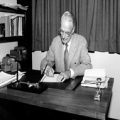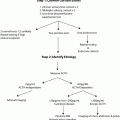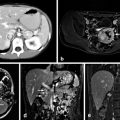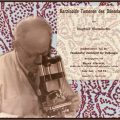Photograph of Charles Best taken by Professor A.V. Hill, University College, London, 1928. (Courtesy of the University of Toronto Fisher Library, The Discovery and Early Development of Insulin online collection, digital ID, L10070. http://link.library.utoronto.ca/insulin/digobject.cfm?idno=P10070)
Charles Herbert Best was born on February 27, 1899, in Maine, USA, the second child of Dr. Herbert and Luella Best, both parents originally from Nova Scotia, Canada. His father was a “country doctor,” and Charles spent much of his boyhood years in and around the towns of Pembroke, Easton, and Eastport [1]. After high school in Pembroke, at the urging of his parents, he moved to Toronto and studied at Harbord Collegiate to synchronize into the Canadian education system, and then enrolled in 1916 at the University of Toronto in general arts. He transferred into physiology and biochemistry after the first year, which was interrupted by a short stint with the Canadian military with duties in Great Britain during World War I, and then he resumed his studies back at the University of Toronto and graduated with a bachelor of arts degree in 1921 [1].
In the summer of 1921, in a few short months, Charles Best was the codiscoverer of insulin . At the time, he and his friend Edward Clark Noble were honors master’s students working under the supervision of John James Rickard Macleod, professor and head of physiology and biochemistry at the University of Toronto. Frederick Banting required assistance to work on his idea of investigating the “internal secretion of the pancreas” and Macleod introduced him to the two graduate students. They were to take turns over the summer working with Banting, and according to many reports, Best won a coin toss to start his month first [1]. Work began in mid-May 1921, and quickly escalated at a feverish pace. Working into the early morning hours and most nights in hot, humid conditions, Banting and Best conducted experiments on dogs to isolate the pancreatic extract , initially by ligating the pancreatic duct, which resulted in atrophy of the acini, leaving viable islet cells allowing easier capture of the extract, which was then administered to dogs that had undergone total pancreatectomy. During the hot summer months and with conditions in the animal laboratory suboptimal, many dogs died from sepsis, with Best complaining to Macleod that it was “next to impossible to keep a wound clean” [2].
In August, a few months after starting the experiments, Best wrote to Macleod: “We made an extract from a pancreas, the ducts of which had been tied for 5 weeks. We followed your directions in preparing the extract—chilled mortar, cold Ringer’s solution, etc. Our first trial was on a dog (410) whose pedicle had been removed on July 18th. …The extract seemed to have a marked effect” [2]. At the injection of extract, the blood sugar dropped dramatically. The letter continued: “Our most convincing experiment is the record of Dog 408. The whole of the large chart is devoted to this dog. We are also inclosing a copy of our notes as entered during the experiment. We hope that the curves and rough notes will make all the points sufficiently clear…. Until we hear from you sir we intend to conduct experiments on two dogs as follows—we will remove the whole pancreas from each and place the dogs in metabolism cages—we will treat one dog with the extract and have the other as a control. …Sincerely yours. F. G. Banting C. H. Best” [2]. Banting also wrote to Macleod on the same day, with more details of the research findings. He also requested to continue with Best, rather than to switch assistants to Clark Noble as agreed on the initial introduction: “Mr Best has expressed the desire to work with me and I should be more than pleased to have him. His work has been excellent and he is absolutely honest, careful and impartial, and has taken a great interest in the work. He has assisted me in all the operations and taught me the chemistry so that we work together all the time and check up each others readings. I hope that you will be able to make out our report” [3].
By November of 1921, Banting and Best had collected enough data to present their initial findings intramurally in Toronto at a Physiological Journal Club, and then publicly at a meeting of the American Physiological Society in New Haven, CT, on December 30, 1921. Soon afterwards, the “Internal Secretion of the Pancreas” was published in the Journal of Laboratory and Clinical Medicine in February 22, 1922, which concluded primarily that
Intravenous injections of extract from dog’s pancreas, removed from seven to ten weeks after ligation of the ducts, invariably exercises a reducing influence upon the percentage sugar of the blood and the amount of sugar excreted in the urine. [4]
The work continued, and after several modifications such as changing substrate to fetal calf pancreas, the pancreatic extract became more potent, which led to greater success at more durable reductions in blood sugar levels. The most dependable results, and more readily feasible for larger-scale production, came after switching to adult beef whole pancreas and using alcohol to extract the hormone instead of saline, and also with the refinements to the purification by James Bertram Collip, a visiting biochemist on sabbatical from the University of Alberta in Edmonton. Collip took Best’s product and increased the alcohol percentage, and when the extract itself precipitated, he used the reconstituted powder as the injectable. The advancements culminated in a preliminary paper published in the Canadian Medical Association Journal in March 1922 as Banting, Best, Collip, Campbell, and Fletcher (the latter two authors were clinicians at Toronto General Hospital), mentioning that the extract was used in seven patients and markedly reduced blood sugar and abolished glycosuria, as shown in detail in the first patient, a young diabetic boy [5]. The next major publication, authored by Banting, Best, Collip, Campbell, Fletcher, Macleod, and Noble, which was presented in May 1922 by Macleod at the annual meeting of the Association of American Physicians in Washington, DC, introduced to the world the term “insulin” for the extract [6]. Later, Macleod regretted not insisting that Banting and Best accompany him to Washington for this seminal paper [7].
Stay updated, free articles. Join our Telegram channel

Full access? Get Clinical Tree







